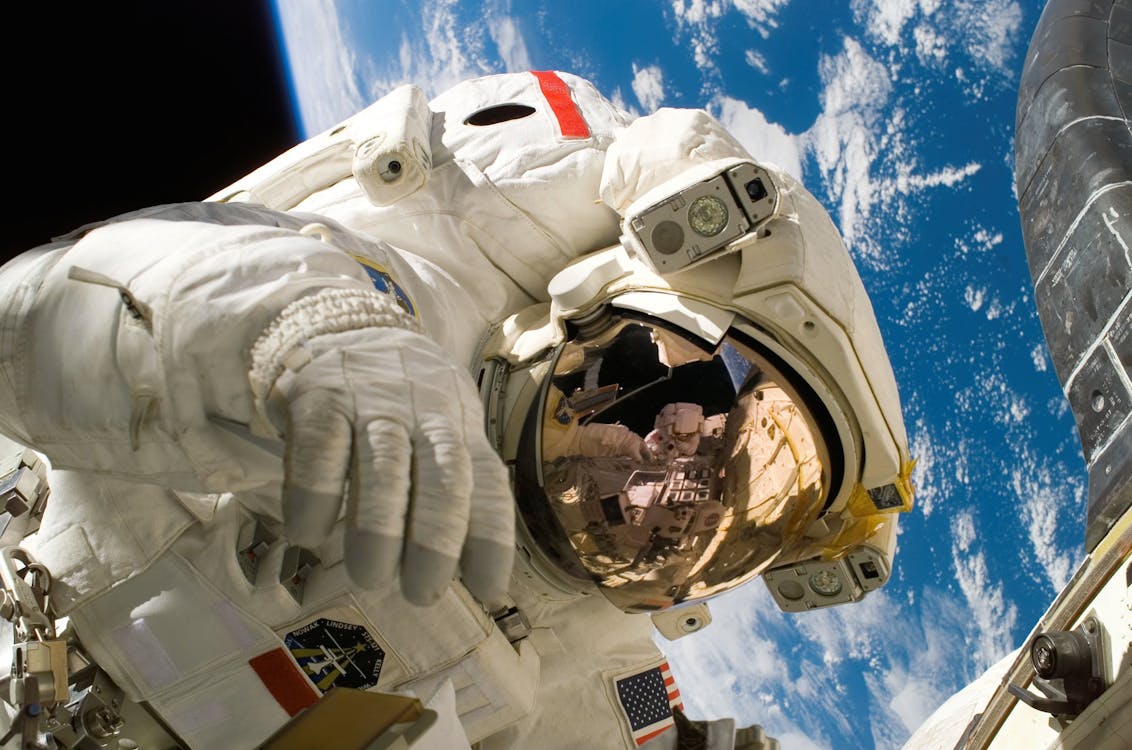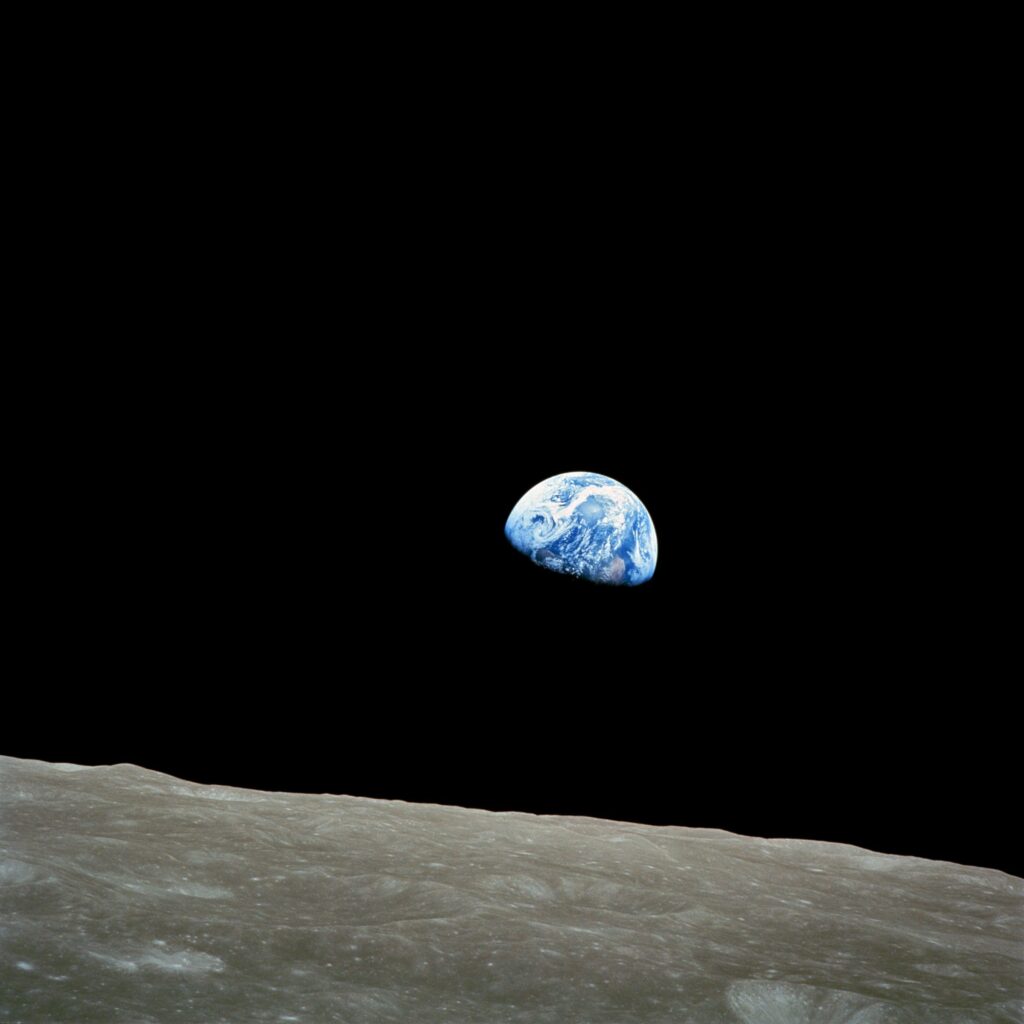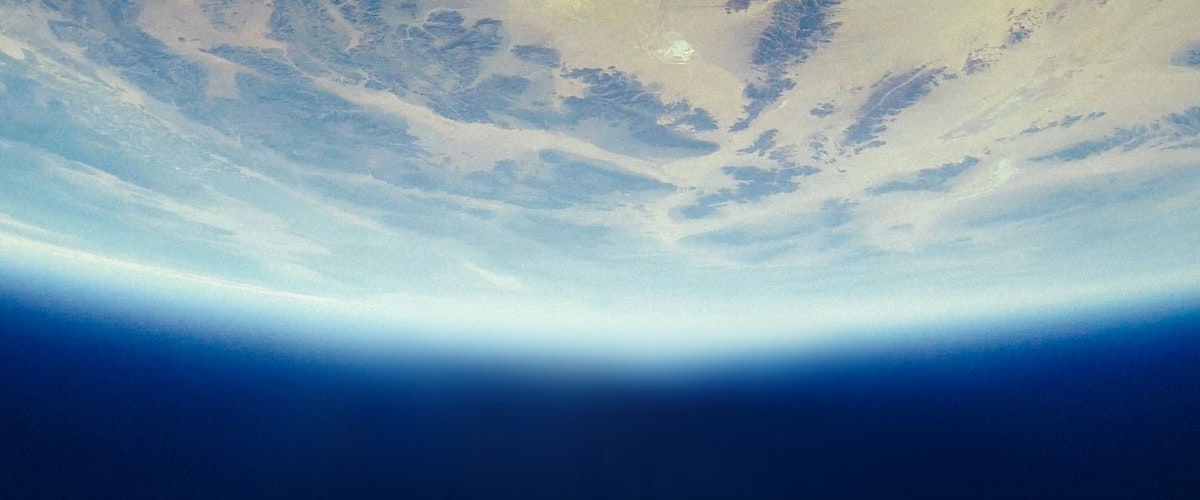Everyone of us has a more or less clear idea of our own reality. We have our jobs, people that surround us, hobbies, and also problems and worries that shape and determine our very own personal life story. Since the pandemic, our worlds have shrunk down to the (dis)comfort of our own small worlds, often only informed about the outside world by the news.
In that, it is easy to get wrapped up in the everyday difficulties or to fall into a certain sense of hopelessness and disconnect when turning on the TV. Borders and limitations often become clearer when we are isolated.
This feeling of isolation can have a negative impact on our mood as well as our long-term mental health. Our own worries might heighten when we are confronted with the state of the world. However, energy and a hopeful outlook are crucial components of positive change.
In recent years, the importance of perspective in mindset has been discussed, especially as a side effect of space travel, of all things. The so-called Overview Effect is a change in perspective that provides astronauts and space travellers with an understanding of our world that shifts towards connection and collectivity. But we don’t have to travel to space to take away valuable insights from their epiphanies.
An image of our world
We get to know our Earth in its entirety from maps in atlases and globes. On paper, delicate lines separate and organize the planet into countries filled with different people speaking different languages under different political rules. These delicate lines, of course, are borders. These borders are only this neat in our books. In reality, they are indicated in different ways, such as natural borders like rivers, human-made borders Nevertheless, they have an effect on us. Border controls and immigration laws, different political climates and languages – there is a lot of division between countries.
On Earth, these effects are ever present and difficult to escape. However, with a significant amount of distance, the visual and effectual evidence of boundaries, borders, and difference blur. On those who experience the Earth from as far away as space, this blurring of borders can have a cathartic effect. Their understanding of the world and its workings evolves – this is called the Overview Effect.
Seeing the big picture – The Overview Effect
The Overview Effect can be described as a shift in consciousness, primarily detected in astronauts after having seen Planet Earth as a connected entity from space. Visually, the view from space can provide astronauts or those who experience the Overview Effect with a strong understanding of the collective nature of the Earth. Human-made borders vanish in over 300.000 km distance.

By getting an overview over the entire planet, astronauts realize that they are part of an undivided whole, an intricate system that accommodates all life that we know. This includes all other humans despite differences in immediate location or beliefs but also nature, animal- and plant life, natural structures, and phenomena.
Now you might think that you know this already. However, there is a difference between the intellectual knowledge of the connectedness and borderlessness of the Earth and experiencing it visually first-hand. A myriad of those people who have been to space have reported a shift away from an individualistic, materialistic understanding of the planet toward a more holistic, empathetic world view.
In fact, the Overview Effect has changed the focus of space travel and the performance expectations demanded of astronauts severely. In earlier space missions, astronauts were required to do as much work as possible in the shortest amount of time. Space shuttles were solely built for efficiency and those who travelled within them had neither the time nor the view to admire Planet Earth for greater amounts of time. Windows were small and functional.
Nowadays, the discovery of the Overview Effect has contributed to the development of a different kind of window for the I.S.S. – the cupola. The cupola is a dome-like structure attached to the space station that allows a better view of it’s exterior but also a panoramic view of space and Planet Earth. Research showed that this view increases mental health and creativity, especially for crews that stay in space for an extended period of time.
But the cupola is not only beneficial for the creativity and well-being of astronauts, it has allowed them to capture much more panoramic pictures that allow us to marvel at the beauty of our planet as well.
Karen Nyberg, a NASA astronaut, who went to space for a mission in 2013 and experienced the view from the cupola herself, describes her experience of the Overview Effect as follows:
“Every single part of the Earth reacts with every other part. It’s one thing. Every little animal is important in that ecosystem. [Seeing the planet from above] makes you realize that, and makes you want to be a little more proactive in keeping it that way. If I could get every Earthling to do one circle of the Earth, I think things would run a little differently.”
Karen Nyberg

Lessons of connection
Now, not all of us are able to take a quick round trip to space to change our perspective on life. However, there are ways to recreate the Overview Effect on Earth. It is unclear whether the effect is the exact same, of course it also depends on the individual, but it may stimulate a change of perspective nonetheless.
Frank White, space philosopher, had the experience of a mild Overview Effect when he was on a plane. He was involved in research regarding space colonization that followed the ideas of Gerard O’Neill, who suggested moving away from purely involving scientists and engineers in the possible colonization processes but expanding to include artists, lawyers, and doctors, among others, as well. Imagining the experience of living in such a colony, theoretically placed in so-called O’Neill cylinders, he envisioned the impact of the breathtaking views of Earth from outer space. His realizations implied that Earth was a borderless planet, a “unified whole” – a fact that requires a certain distance from the planet’s surface to be fully realized.
However, even without the physical distance, the Overview Effect can have a positive impact on our understanding of the world as a natural, borderless entity. Psychologist Annahita Nezami proposes the use of virtual reality to make the experiences of the Overview Effect more accessible and collective. She argues that the darker side of human nature embedded in a focus on power and success, the principle of survival of the fittest, and consumerist tendencies are subtly destructive forces that infiltrate the structures of the well-being of human society as a collective.
Seeing the world as it is naturally, without borders, could achieve a shift in perspective away from individualistic and materialistic values towards a focus on connection, empathy, and collectivity. Through combining the perspective shifts of the Overview Effect and the technology of virtual reality, Nezami aims at moving towards healing collective societal structures instead of focusing only on individual therapeutic treatments.
Lastly, Oliver Jeffers, a visual artist, created a model of the Earth and moon at the scale of one New York City block. While he drew in the borders as we know them from maps, instead of writing the country’s name, he simply wrote “People Live Here” on each separate country. When standing next to the moon, labelled “No One Lives Here”, the Overview Effect can be simulated as viewers experience Earth at a distance and might realize that the distinctions between countries grow more insignificant from this perspective.
In order to get a better insight on Jeffers’ work and projects, and his artistic exploration of human connection and the Overview Effect watch his inspiring TED talk:
With everything that is happening on our planet right now, a perspective shift might just be what we need. While the Overview Effect on Earth is still very much experimental, taking a step back and reevaluating our understanding of things could provide us with some additional energy. So, whether in a space station, on a plane, or at home, a look outside of our boundaries might give us some valuable insight on how to change for the better.

